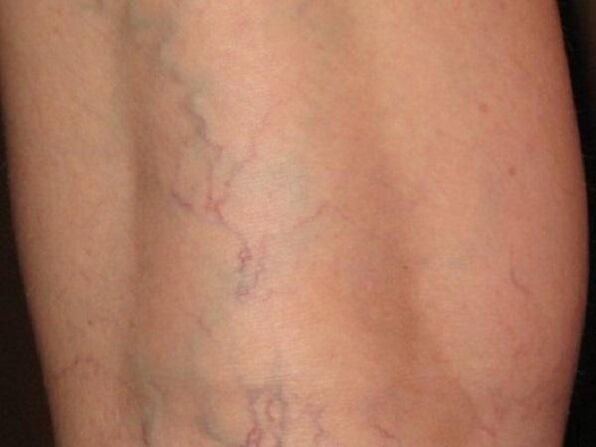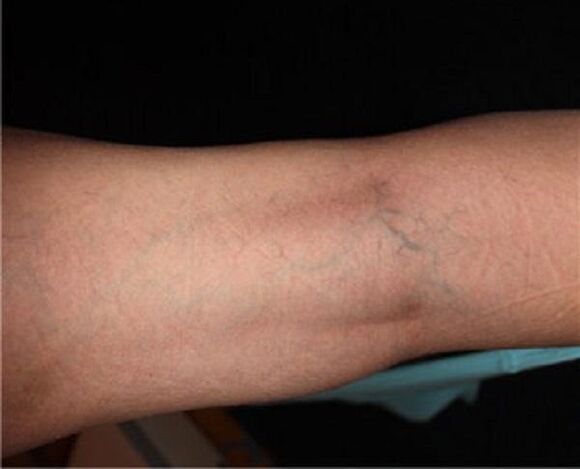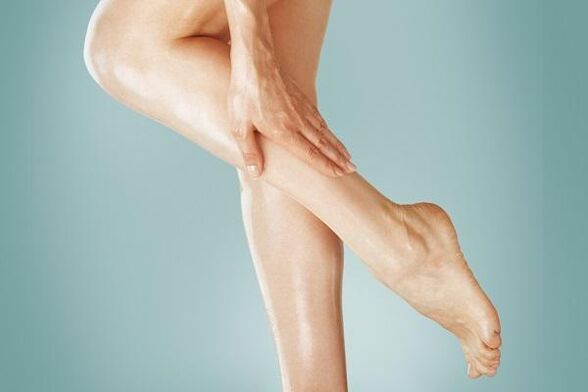The pathological changes in the structure of the venous vessels cause a varicose veins, as a result of which their patent occurs, the elasticity and walls of the walls and the formation of specific joints occurs.
Distinguished several types of varicose veins:

In everyday life, the expression "varicose" was solved tightly, but in official medicine there is nothing like that and diagnosis, as we are talking about varicose veins.
Symptoms and signs
The disease that spreads to the lower extremities is associated with symptoms:
The consequence of the development of varicose veins of the rectum is the appearance of hemorrhoids. It is associated with the following symptoms:
PHASE
The development of varicose veins of the lower extremities exceeds three stages.
Important! In early manifestations of varicose veins, the role of medical and preventive measures is important, during their implementation, the chance to prevent further development of the disease increases significantly.
Varicosis in the early stage of the manifestation is evidenced by the feeling of severity, swelling, painful leg pain. During this period, it is necessary to immediately begin preventive measures: a course of massage, swimming, use of special legs, as all this is effective to prevent the development of varicose veins only at first.

Complications (consequences) of varicose veins
Varicose disease can lead to serious complications. In the last stage of the development of varicose veins, the extreme thinning of the vessel walls is observed, in this regard, the risk of trophic ulcers - opens weak healing wounds in the container that occur with minor trauma.
The result of the varicose joint rupture is the development of thrombophlebitis. During the appearance, which the formation of thrombosis occurs with inflammation of the vein wall and forms a blood clot, which covers its lumen.
With the development of acute thrombophlebitis, severe pains appear in the area of the thrombus veins, and body temperature, accompanied by chills, rises. With surface veins thrombophlebitis, painful seals with skin rashes along the veins are characteristic. Deep vein thrombophlebitis is associated with limb edema due to a sharp violation of venous outlet.
Varicose veins in women
Many women face varicose veins. This is due to women's predisposition to the disease due to the characteristics of the female hormonal system. Moreover, pregnancy and childbirth in most cases are the causes of varicose veins, as there is a effect of increasing the load and increased blood flow to the pelvic organs. In addition to varicose veins of the lower extremities in women, varicose veins in the perineum, affecting the external genitals, often develops, which is a consequence of congenital or acquired vascular wall weakness and valve insufficiency. The effect of external static stress (prolonged stress, important physical activity) or internal factors (excess body weight, pelvic organs in a chronic form) leads to the formation of varicose veins.
Important! The impact of oral contraceptives and hormone replacement therapy remains open.
Development of varicose veins during pregnancy
The impact of each subsequent pregnancy significantly increases the chances of developing venous insufficiency in women and the formation of varicose veins. This is due to hormonal changes in a woman's body and a significant increase in load on the veins. The main task of a woman during this period is to respect preventive measures to avoid the development of varicose veins. If there is a predisposition and there are signs of initial development of varicose veins, consultation and observation of a phlef is needed for the whole pregnancy. Preventive measures should be supplemented by clothing and freedom of compression, in some cases should be worn for the birth period of children. For this, special models are available.
Varicose veins in men
Varicose disease is often found in men in the form of varicocele veins - varicose veins of the seed cord. Symptoms of the disease:
Varicocele development causes male infertility due to circulatory disorders and associated pathological changes in the normal functioning of the testicles:
Treatment of varicose veins in men consists of surgical surgery in the presence of indications: testicle pain, infertility, aesthetic defect in the scrotum, lack of increased testicle during puberty. However, the disease can occur asymptomatic and do not cause significant discomfort to a person. In adolescents and children, when diagnosing varicocele, surgery is needed at every stage of the disease, this avoids further development of infertility. Operations are performed in both the usual open and endoscopic way. Postebles possible to perform surgical intervention by mini -acses and micro -surgical testiculation of the testicle.

Varicose
Varicose veins can occur in the pelvis. In this form, it is in most cases in women, which is associated with the characteristics of blood supply to the female body. The enlargement of the veins causes a feeling of pain and severity in the pelvis, which can be caused by a venous stagnation.
The development of small pelvis varicose veins occurs for several reasons:
If there are risk factors and symptoms of the disease, it should suffer an examination. In the early stages, you can identify the varicose veins of the small pelvis with ultrasonic diagnosis. Preliminary diagnosis is also possible for a gynecological examination during the standard procedure. Treatment of the disease involves taking venotonic drugs, coating of special compression linen and implementation of medical and preventive gymnastics. It is also necessary to exclude risk factors and are regularly observed in a gynecologist. With the ineffectiveness of conservative treatment methods, surgical intervention is indicated.
Treatment of Varicose veins
Therapeutic measures for varicose veins consist of conservative methods of treatment medication and in later stages - surgical intervention. In the early stages and in the first signs of varicose veins, it is recommended to take enotonics. As preventive measures, elastic bandage, wearing knit clothing with compression and restricting physical activity at all stages of the disease.
In later stages, drug intake and ointments from varicose veins are described:
Subsequent stages indicate phlebectomy, surgical removal of pathologically altered veins, as well as sclerotherapy - the administration of special medicines that sclerosis damaged veins, thereby preventing their participation in venous outlet.
It should be noted that we have already written in detail which compression freedom, but for the moment only the surgical treatment method is set as the most effective.

Home treatment
Special gels and ointments can relieve pain in the legs caused by varicose veins. They are unlikely to get rid of varicose veins, given the local effect and poor penetration through the skin, but they will relieve the symptoms of the disease and relieve the condition. Among the tools for external use, groups can be distinguished:
Folk remedies
Traditional varicose veins recipes are also used to relieve symptoms and as general strengthening.
Green tomato
With the appearance of pain in the vein region, compresses from green tomatoes help well. To do this, it is enough to take the fetus, cut into slices and paved in the damaged area at night, after previously fixing with a bandage. Green tomatoes contain an antioxidant - lycopyin. Because of its effects, not only the pain is removed, but also the blood circulation improves, and the stagnation phenomena have decreased. With regular use, the cones formed with varicose veins become less painful and can decrease in volume. You can use common tomatoes in the form of tomato paste for compresses, as it has the highest concentration of lycopene.
Vegetable
It is necessary to fill in anti -varicosis therapy with general strengthening agents. As a source of nutrients, freshly squeezed vegetable juices should be consumed daily. Carrot-Root-Selderic fresh. To strengthen blood vessels, carrot juice is useful, which contains a high concentration of routine - a trace element that helps strengthen blood vessels. The composition of the juice from the spinach leaves is rich in the content of oxalic acid. It carries a cleaning function in relation to the vessels and prevents the formation of blood clots.
Important! Celery is involved in accelerating the process of decaying fat deposits, removing the products of this decay and excess fluid from the body.
Carrot-Root-Bruise Freesh. Beetroot juice helps improve blood circulation and blood formation processes, as it stimulates red blood cell synthesis, increases hemoglobin level and is prevention of anemia. Prepare in a proportion of 10: 3: 3.
Preventing the disease
To reduce the risk of varicose veins, it is necessary:

exercise
Prevention and treatment of varicose veins also consist of performing the therapeutic and preventive gymnastics exercises aimed at improving blood circulation and getting rid of blood stagnation signs. Such exercises are useful to perform every regular day. You need to start classes with pre -preparation of the feet: for this you need to lie on your back by placing your feet on the roller or the back of the sofa. There are 10-15 minutes in this position.
Further, remaining in the stretch position, continue performing exercises:
Varicose veins develop for a long time, so when the first signs appear, there is a chance to suspend its course. But the only method, the complete annihilation of the varicose veins, remains the surgical removal of the veins. Be healthy!

















